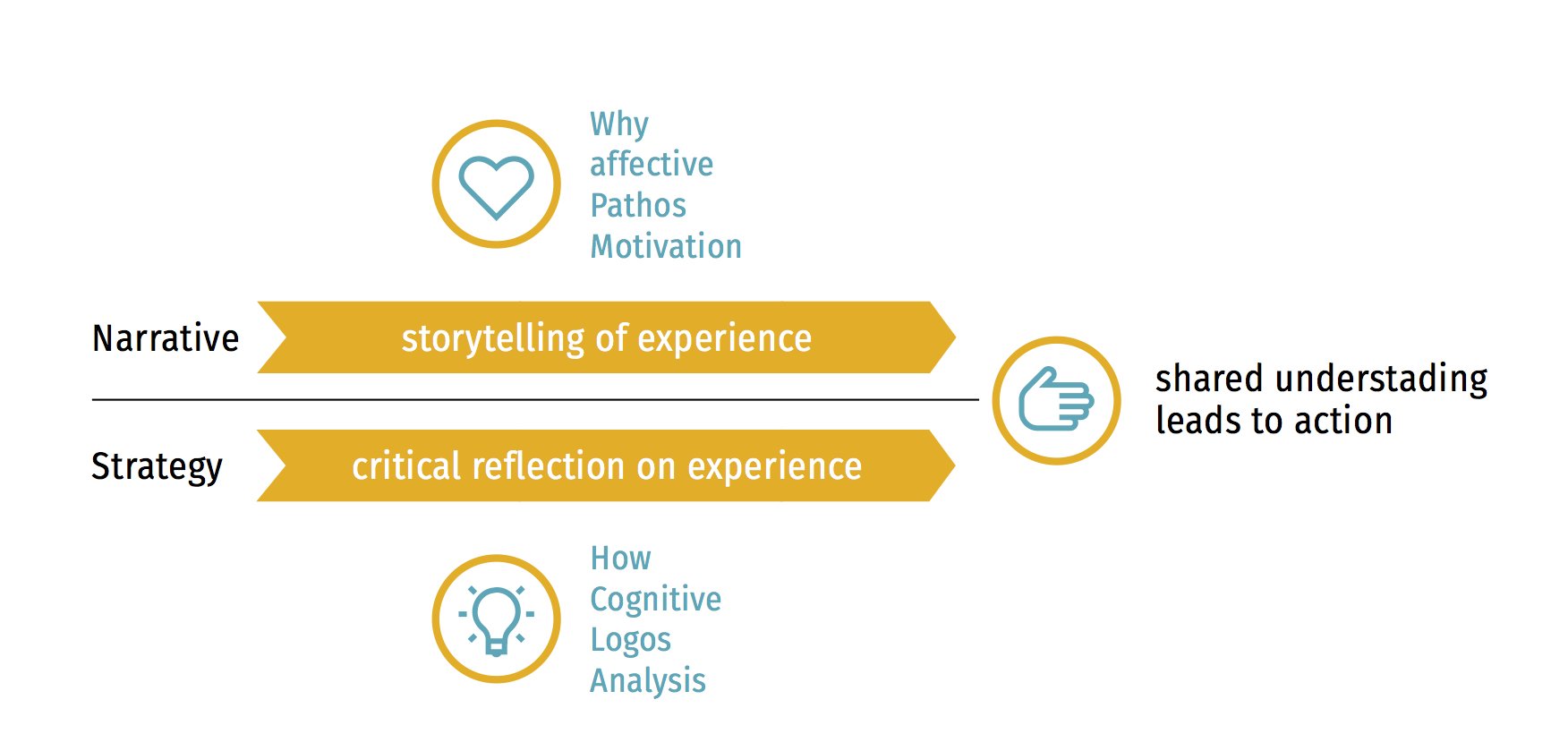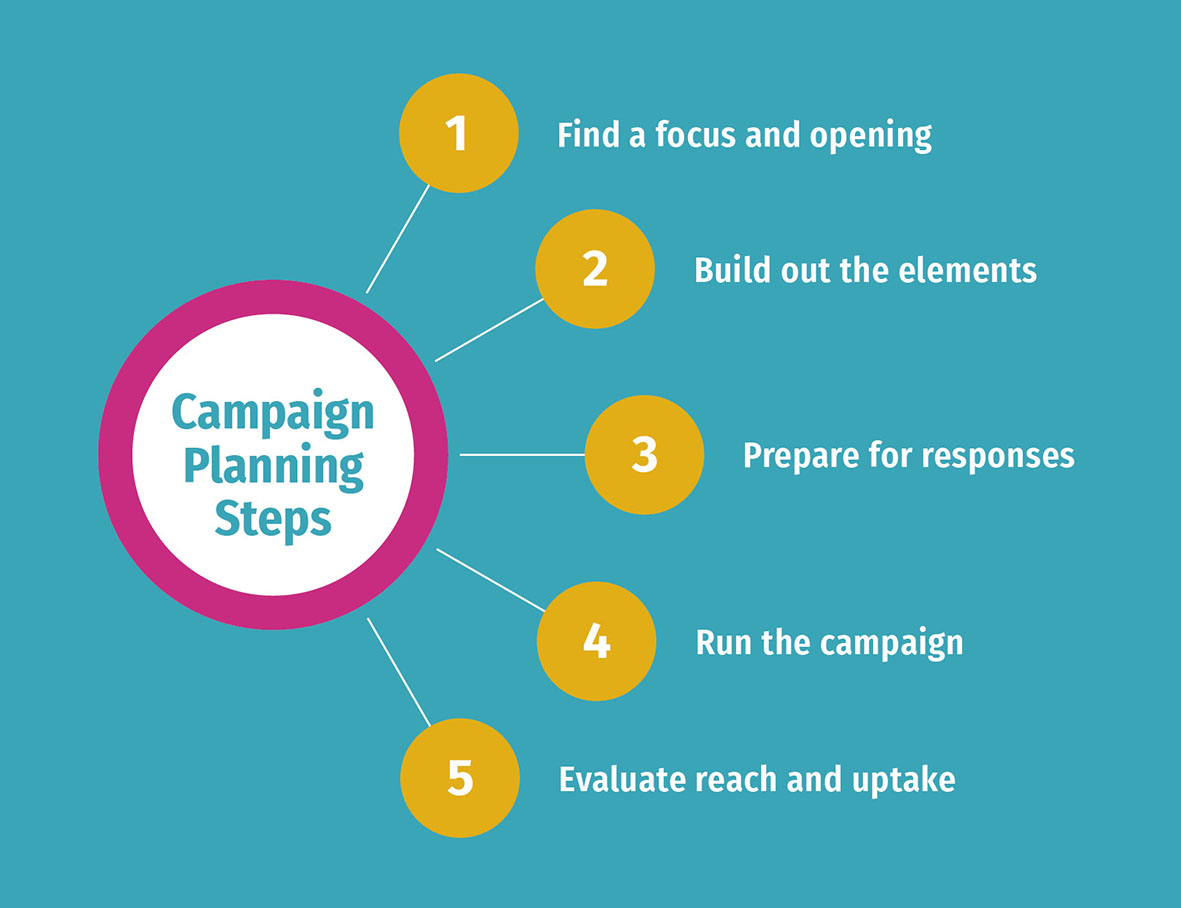0.0 Introduction to Guidelines
This set of guidelines targets progressive campaigners and advocates wishing to better engage the middle sections of society in order to push back the mainstreaming of populist narratives and put diversity and inclusion back on the agenda. There is a broad realisation that the standard approaches of only arguing facts and right is not serving the progressive agenda, and as more and more populists get elected in Europe, we need to try something different to rebalance the public debate. For more detail on the challenges, see the toolkit introduction.
Reframing the debate and campaigning to engage the broader public
The approach at the heart of the toolkit is based on established theory and international practice of narrative change campaigns built around a reframing approach. In emotionally charged discussions such as the current migration debate, the values, concerns and emotional investment of stakeholders become an important gateway to real dialogue and engagement1 . Such an emotionally smart, narrative change/reframing approach usually involves the following elements:
- Acknowledging the legitimate concerns of the target audience;
- Building the campaign on shared, positive, unifying values;
- Leading with solution-oriented, resonant messages that engage the audience, and trigger feelings of familiarity and warmth; followed by:
- Adding an element that challenges audiences to think differently, i.e. an element of dissonance. This is the opening that the approach creates.
- Listening, asking open questions in a reasonable and civil manner that allows for a constructive dialogue on the issues, opening the door for a clear and engaging defence of progressive positions.
The power of a reframing approach is that you build your appeals on community-owned stories and values that easily resonate and from there, through an open and inclusive process of listening to each other’s conversations, you can quite forcefully challenge populist views.
A clear focus on the heart, not the head
A narrative change campaign focuses the affective, engaging pathos, telling stories of experience, wishing to create a warm feeling that easily engages the audience, feels nearly like common sense to them, and ultimately is appealing to the heart, rather than the head. The diagram below highlights this approach, as a key pillar in building any social movement2 .

Figure 1: Focus of Narrative Change Campaigns on the Heart (adapted from Ganz 2011)
Focus on groups we can win over in this debate – "the movable middle"
Campaigners need to be strategic in deploying the reframing approach with a group that you can win over, and also at a scale where winning can tip the balance in the public discussion. This is why our focus in the toolkit is on the so-called ‘movable middle’. In most European countries, this is 60% to 70% of the population who are not that involved, informed or engaged in the issue, but are susceptible to mainstream media agendas, i.e. they are movable. Of course, for campaigners this means having a much more complicated understanding of those outside their normal supporter group and a willingness to engage this group in campaigning efforts. This approach may not be suitable for all, but the minimum campaigners need is understanding and support for those who choose this path and recognition that this is a key part of the fight.
The many examples of this type of campaign are outlined in the campaign cases page, but to illustrate, below is a short overview of three core cases we drew on:
CASE 4 - Rumors Kitchen/Gerüchteküche - Mannheim, Germany
Two artists built a kitchen and dining room installation which was installed in three districts of Mannheim in Spring 2016. Passers-by were invited to sit and share migration rumours and the artists ‘transformed’ the rumour into a dish (visualisation of the rumour), which was served to the citizen. The experience was a basis for dialogue and exploring different narratives to counter the rumour.
CASE 1 - Poppy Hijab Campaign, British Future, UK
To challenge anti-Muslim sentiment, British Future developed a campaign called the ‘Poppy Hijab’ commemorating the 400,000 Muslim soldiers who died fighting in wars for Britain. They made a hijab featuring the commemorative poppy and launched it in the right-wing newspaper, The Daily Telegraph, under the slogan “Proudly British – Proudly Muslim”.
CASE 2 - Shrewsbury Prayer Centre, Hope not hate, UK
To challenge an othering anti-Muslim frame from those opposed to giving planning permission to a Muslim prayer centre in the town, HOPE not hate changed the discussion to ‘right to worship’ and decency frames and got local community church leaders on board to deliver the message to conservative politicians, build on a shared, unifying, but ultimately core conservative value appeal.
The toolkit and guidelines were developed under ICPA’s project, ‘Reframe the debate! New migration narratives for constructive dialogue’ (2017-2019) as part of the Demokratie Leben programme, supported by the Ministry of Family Affairs, Senior Citizens, Women and Youth and Social Change Initiative. As part of this project work since 2017, we have directly supported progressive campaigners in the development of narrative change campaigns and these guidelines are based on the campaigning practice and lessons we have learned from this German experience, as well as from international partners/campaigners. More specifically, the toolkit starts from a multidisciplinary view of public advocacy, framing and agenda setting from the fields of political communication3
, behavioural economics4
, cognitive linguistics5
, social psychology6
and negotiation7
, but the main focus is on how such insights have been more practically applied in international campaigning practice in migration work8
.
Our objectives in providing these guidelines are to:
- Support the capacity development of campaigners to more effectively campaign to the middle in the migration debate and open a space for policy dialogue and solutions driven by diversity and inclusion;
- Guide campaigners with a strategic approach based on key pillars, lessons from practice, and a practical staged process in which to plan a narrative change campaign;
- Inspire and encourage more campaigners, activists and advocates to adopt a reframing/narrative change approach in their public advocacy work and/or support those who take this path.
With a clear focus on supporting practical campaign practice, the guidelines are structured around the following Narrative Change Campaign Planning Process, developed as part of this toolkit:

Figure 2: The Narrative Change Campaign Planning Process
Taking each of the five steps, we break down the sub-elements of each step and assist campaigners by:
- Introducing each element in an accessible manner;
- Illustrating the points made in campaign practice or based on research;
- Providing targeted questions to the campaigner to help them structure their own campaign work.
Before getting to the steps, we open the guidelines by sharing an introduction to the power of frames, why they are central to the challenge, and also how they represent the way out.
<< Toolkit Intro - 0.1 >>
- 1Fischer, Frank & Herbert Gottweis [eds.] (2012) The Argumentative Turn Revisited: Public Policy as Communicative Practice. Durham: Duke University Press & Scholten, P. & F. Van Nispen (2008) “Building Bridges Across Frames? A Meta-Evaluation of Dutch Integration Policy”. Journal of Public Policy 28/2, p.181-205.
- 2Ganz, Marshall (2011). “Public Narrative, Collective Action, and Power.” Accountability through Public Opinion: From Inertia to Public Action, edited by Sina Odugbemi and Taeku Lee, World Bank Group, 2011, pp. 269-286.
- 3Entman, Robert M. (2003) Cascading Activation: Contesting the White House's Frame After 9/11, Political Communication, 20:4, 415-432. & Druckman, J. N. (2001). On the limits of framing effects: who can frame? Journal of Politics, 63, 1041-1066. & Scheufele, Dietram A (1999) ‘Framing as a theory of Media Effects’ in Journal of Communication, Winter 1999, p.103-122.
- 4Kahneman, Daniel (2011). Thinking, Fast and Slow. New York: Farrar, Straus and Giroux. & Thaler, R. H., & Sunstein, C. R. (2009). Nudge: Improving decisions about health, wealth, and happiness. New York: Penguin Books.
- 5Lakoff, George (2002) Moral Politics: How Liberals and Conservatives Think. Chicago: The University of Chicago Press. & Lakoff, George (2014). Don't think of an elephant!: know your values and frame the debate : the essential guide for progressives. 2nd Edition. White River Junction, Vt, Chelsea Green Pub. Co.
- 6Lewandowsky, S., Ecker, U., Seifert, C. M., Schwarz, N., & Cook, J. (2012). Misinformation and Its Correction: Continued Influence and Successful Debiasing. Psychological Science in the Public Interest, Supplement, 13, 106-131.
- 7Stone, D., Patton, B., & Heen, S. (2000). Difficult conversations: How to discuss what matters most. New York, N.Y: Penguin Books. & Ury, W. (1991). Getting past no: Negotiating with difficult people. New York: Bantam Books.
- 8US – America’s Voice, Frameworks Institute, The Narrative Initiative, Welcoming America & UK – British Future, HOPE not hate, Migration Exchange, Social Change Initiative